
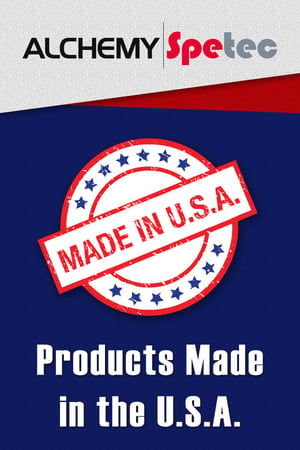 Alchemy-Spetec products are proudly made in the U.S.A. Manufacturing at the Tucker, GA, and Reno, NV facilities (rather than outsourcing abroad) provides three distinct advantages to you and to the country we all call home: consistent quality, reliable supply, and more American jobs.
Alchemy-Spetec products are proudly made in the U.S.A. Manufacturing at the Tucker, GA, and Reno, NV facilities (rather than outsourcing abroad) provides three distinct advantages to you and to the country we all call home: consistent quality, reliable supply, and more American jobs.
Consistent Quality
With our industry experts overseeing the production process, products are manufactured to the exact same specs with the exact same equipment every time. Outsourcing to a rotating line-up of the lowest overseas bidders would force us to sacrifice these advantages.
Reliable Supply
Being in complete control of the facilities in which our products are made ensures a reliable supply of products (within the boundaries of raw material availability of course). Outsourcing would leave us (and you) at the mercy of overseas facilities conditions, which we have no control over.
More American Jobs
One of Alchemy-Spetec's core company values is an appreciation for, and a desire to benefit, the United States of America. If manufacturing superior products in a controlled, reliable manner also happens to create more jobs for American citizens - all the better! That is what we call a win-win situation!




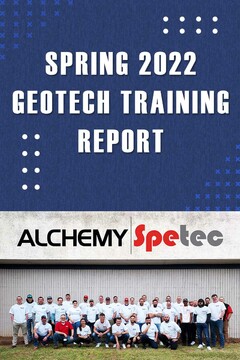 On March 29th - 31st, Contractors from around the world traveled to Alchemy-Spetec HQ in Tucker, GA for a thorough education in Slab Lifting, Soil Stabilization, the Deep Lift® process, equipment, and applications. They received hands-on training from a technical staff with decades of on-the-job experience.
On March 29th - 31st, Contractors from around the world traveled to Alchemy-Spetec HQ in Tucker, GA for a thorough education in Slab Lifting, Soil Stabilization, the Deep Lift® process, equipment, and applications. They received hands-on training from a technical staff with decades of on-the-job experience.

 Alchemy-Spetec's Spring 2022 training event is officially SOLD OUT! If you're still interested in training, we'll be conducting another event in the Fall of 2022. Click the button below and fill out the form. We'll keep you updated on the next event and all other training opportunities!
Alchemy-Spetec's Spring 2022 training event is officially SOLD OUT! If you're still interested in training, we'll be conducting another event in the Fall of 2022. Click the button below and fill out the form. We'll keep you updated on the next event and all other training opportunities!
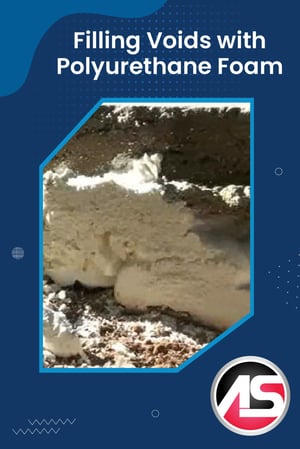 Filling voids is one of the most common applications for polyurethane concrete repair foam. Geotech contractors use specialized foam to fill voids in the soil under slabs, behind retaining walls, and around municipal infrastructure. In this post, we'll review some of the most popular Alchemy-Spetec blog articles on the subject.
Filling voids is one of the most common applications for polyurethane concrete repair foam. Geotech contractors use specialized foam to fill voids in the soil under slabs, behind retaining walls, and around municipal infrastructure. In this post, we'll review some of the most popular Alchemy-Spetec blog articles on the subject.
 Enjoy the Advantages and Avoid the Pitfalls
Enjoy the Advantages and Avoid the Pitfalls
 Andrew has over 10 years of experience in Manufacturing Operations and Quality Assurance. With a Six Sigma Black Belt certification, he has a successful track record of evaluating complex manufacturing operations, identifying inefficiencies, and implementing process improvements.
Andrew has over 10 years of experience in Manufacturing Operations and Quality Assurance. With a Six Sigma Black Belt certification, he has a successful track record of evaluating complex manufacturing operations, identifying inefficiencies, and implementing process improvements.
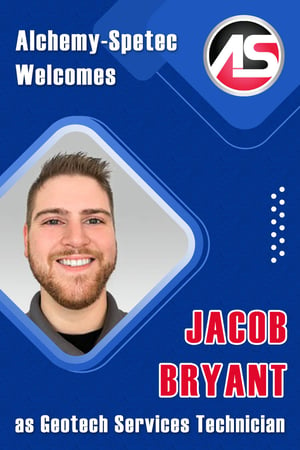 Alchemy-Spetec is pleased to welcome Jacob Bryant to our technical support team. Jacob joins the company as Geotech Services Technician. He'll be working with Cult Hullander (Director of Technical Services - Geotech).
Alchemy-Spetec is pleased to welcome Jacob Bryant to our technical support team. Jacob joins the company as Geotech Services Technician. He'll be working with Cult Hullander (Director of Technical Services - Geotech).

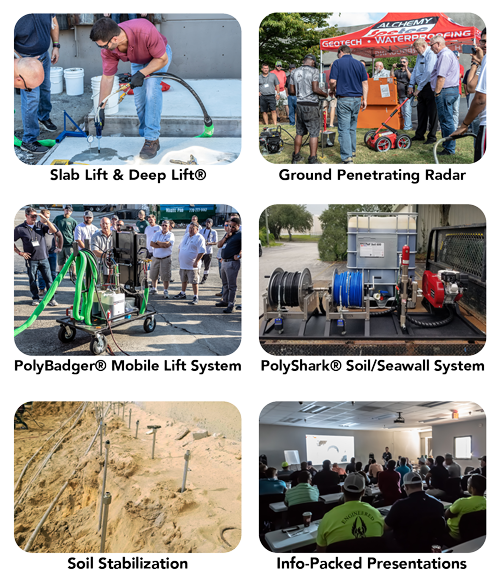


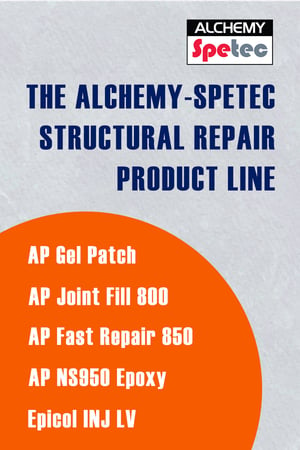 The Alchemy-Spetec structural repair product line consists of products for patching, joint filling, spall repair, anchoring, and bonding.
The Alchemy-Spetec structural repair product line consists of products for patching, joint filling, spall repair, anchoring, and bonding.